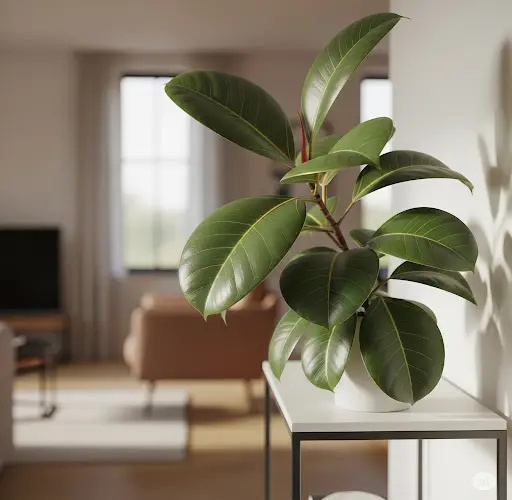Houseplants can completely transform the atmosphere of a home. They add beauty, purify the air, and provide a sense of calm. But sometimes, even with proper care, your plants may seem tired, dull, or stop blooming altogether. Leaves may fade, flowers disappear, and growth slows down. This is especially common during seasonal changes or after a plant has been moved or repotted.
Fortunately, there’s a remarkably simple and affordable way to revive nearly any indoor plant using just one tablet—a method that requires no expensive fertilizers or complicated routines. Whether your plant has stopped flowering or its leaves are looking pale and weak, this approach helps restore vitality and encourages lush growth and vibrant blooms.
The Secret Ingredient: Succinic Acid
The “magic” behind this method is a humble but powerful substance known as succinic acid. Found in natural sources such as amber and some plants, succinic acid is also sold in tablet form as a dietary supplement in pharmacies.
Succinic acid works as a natural plant biostimulant, which means it activates and enhances internal processes without acting as a conventional fertilizer. Rather than simply feeding the plant, it boosts its ability to absorb and utilize nutrients more efficiently. It also strengthens the immune system, stimulates cell regeneration, and improves stress tolerance.
Why It Works for All Houseplants
Succinic acid is effective for nearly every type of houseplant:
-
Flowering plants like geraniums, violets, orchids, and hibiscus
-
Green foliage plants such as monstera, dieffenbachia, pothos, and spathiphyllum
-
Succulents and cacti, when used in lower doses
-
Bulb plants such as amaryllis or clivia
No matter the type, the tablet gives the plant a boost in energy and metabolic activity, helping it transition out of a dormant or struggling phase into active growth and blooming.
How to Prepare the Solution
What You’ll Need:
-
1 tablet of succinic acid (100–200 mg)
-
1 liter of lukewarm, filtered or distilled water
-
A clean container for mixing
Instructions:
-
Crush the tablet into a fine powder using a spoon or mortar and pestle.
-
Dissolve the powder in a small amount of warm water and stir until fully dissolved.
-
Add the rest of the water to dilute the solution.
-
Use immediately, as the solution loses effectiveness if stored too long.
Note: Succinic acid is safe and non-toxic, but always use it in moderation and on well-watered soil to prevent stress to the roots.
How to Apply the Solution
There are two main methods for application:
1. Watering:
Pour the solution gently around the base of the plant to reach the root zone. This helps stimulate root development and improves nutrient uptake.
2. Spraying:
Use a spray bottle to mist the leaves (avoid blooms). This method delivers the acid directly to the plant’s surface, encouraging photosynthesis and faster recovery.
For plants in poor condition, combining both watering and spraying can yield quicker results.
How Often to Use It
-
Apply the solution once every 2 to 3 weeks during the active growing season (spring and summer).
-
For plants recovering from stress, apply every 10 days for a short recovery period.
-
Do not overuse—too frequent application can lead to nutrient imbalances or root fatigue.
Expected Results
When used properly, you can expect to see positive changes within 7 to 10 days:
-
Leaves become greener and more vibrant
-
Wilting or yellowing stops
-
New shoots and flower buds may appear
-
The overall plant posture becomes more upright and lively
Within a few weeks, most plants will show visible signs of rejuvenation, and some will begin blooming even if they haven’t done so for months.
Additional Plant Care Tips
To enhance the effects of the succinic acid treatment, pair it with the following good practices:
-
Adequate Light: Make sure your plant is in a spot with enough indirect sunlight.
-
Proper Watering: Avoid overwatering; water only when the top layer of soil feels dry.
-
Clean Leaves: Wipe down leaves occasionally to help with light absorption.
-
Well-Draining Soil: If the soil is compacted or soggy, consider repotting with fresh mix.
Final Thoughts
There’s no need to give up on a dull or lifeless plant. Sometimes, all it takes is a simple, inexpensive tablet to bring it back to life. Succinic acid is a gentle but powerful booster that supports internal plant functions, helping your houseplants not only survive but thrive.
Try placing one tablet’s worth of this solution under your favorite plant, and watch as the leaves green up and flowers start to bloom again. It’s an easy, natural way to rejuvenate your indoor garden—and one that delivers real results without breaking the bank.



